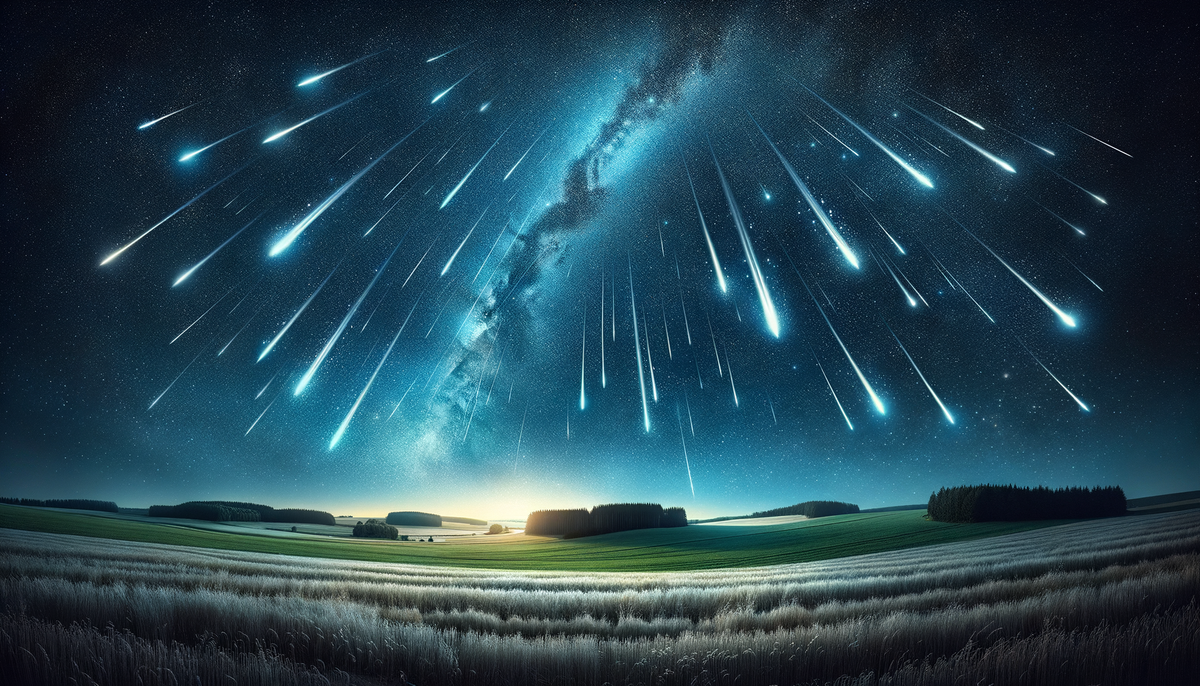Meteor Shower Eta Aquarids: A Spectacular Celestial Event
Discover the splendour of the Eta Aquarid meteor shower this May. An incredible celestial event with vibrant histories and views.

Meteor Shower Eta Aquarids: A Spectacular Celestial Event
The meteor shower Eta Aquarids, one of the most anticipated astronomical phenomena, graces our sky annually as part of a spectacular showing of celestial fireworks. This year, the Eta Aquarids meteor shower promises another thrilling view as it peaks. This natural wonder has intrigued astronomers and sky-gazers alike, making it a key topic in the world of astronomy.
Overview of the Eta Aquarid Meteor Shower
The Eta Aquarid meteor shower is an annual event occurring each spring, typically active between April 19 and May 28, with its peak in early May. In 2025, the peak is expected from the night of May 5 into the early hours of May 6, providing a prime opportunity for observers [source: New York Times, CBS News, NPR].
Origin and Characteristics
Originating from debris left by Halley’s Comet, the Eta Aquarids provide fast, bright streaks across the night sky. These meteors are not only famous for their speed but also for the impressive show they provide, being one of the two meteor showers linked to Halley's Comet, the other being the Orionids appearing in October.
Viewing Details for 2025
This year’s peak, occurring on the night of May 5 and the morning of May 6, promises an enchanting viewing session. Although the active period spans from April 19 to May 28, the best sightings happen during peak mornings, particularly before dawn between 2 a.m. and sunrise. It is noteworthy that the moon, about 64% full, will overshadow some fainter meteors, yet viewers can still expect to see approximately 10–15 per hour under optimal conditions.
Best Viewing Tips
- Away from city lights for minimal light pollution.
- Lay on your back and look away from the moon for the best visual experience.
- Allow eyes 30 minutes to adjust to the darkness.
- Avoid all bright lights and screens to preserve night vision.
Radiant and Location in the Sky
During this period, the radiant can be found near the star Eta Aquarii in the Aquarius constellation. On May 6, between 3:00 to 6:00 a.m., the radiant ascends higher in the eastern to southeastern sky, gradually rising from just above the horizon to significant altitudes:
- 3:00 am: 3.3°
- 4:00 am: 14.7°
- 5:00 am: 25.7°
- 6:00 am: 35.8°
Notable Facts
Halley’s Comet, the progenitor of these meteors, orbits our sun every 76 years. Its next appearance won’t occur until 2061, adding a layer of mystery and rarity to the event. The Eta Aquarids are especially robust in the Southern Hemisphere but are also visible from northern locales.
Summary of Eta Aquarids 2025
| Feature | Details |
|---|---|
| Peak Dates | May 5–6, 2025 |
| Active Period | April 19 – May 28 |
| Meteors per Hour | 10–15 |
| Radiant Constellation | Aquarius (near Eta Aquarii) |
| Parent Body | Halley’s Comet |
| Best Viewing Time | 2:00 a.m. to sunrise |
| Next Halley's Appearance | 2061 |
| Moon Illumination | 64% (Bright moon affecting visibility) |
Conclusion
The Eta Aquarid meteor shower is not only a stunning display of cosmic beauty but also an insightful event for astronomy enthusiasts. Professionals and business leaders involved in meteor studies should use this period as a learning opportunity, observing the natural phenomena tied to Halley’s Comet.
Call to Action: Embrace the magic of the Eta Aquarids this year. Find a perfect spot away from urban lights, and experience the breathtaking view of this meteor shower. For consultative services on celestial events and how they could impact your field, connect with us at Newsomix for further insight.
Explore more about these magnificent meteors and our services on our website!




